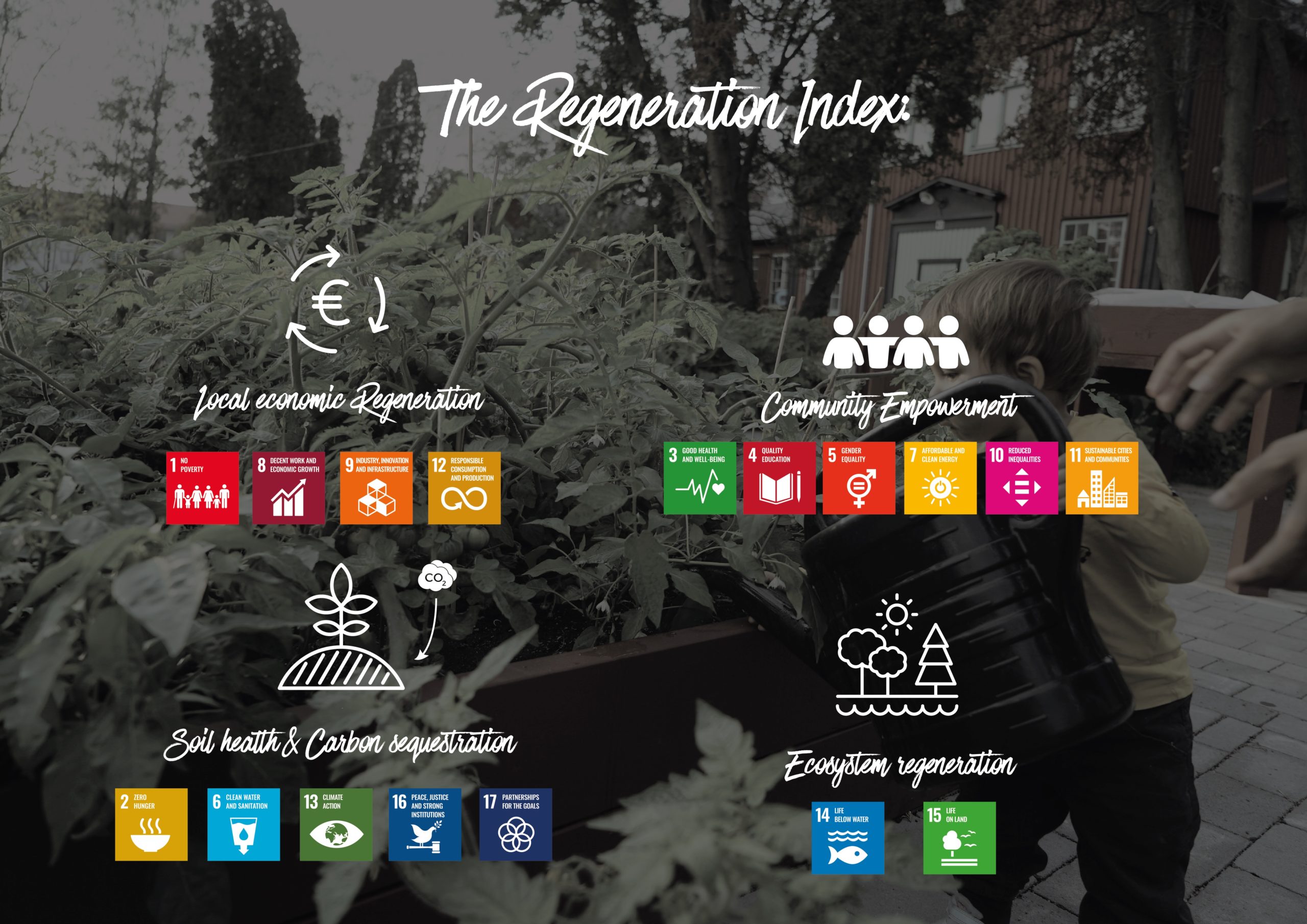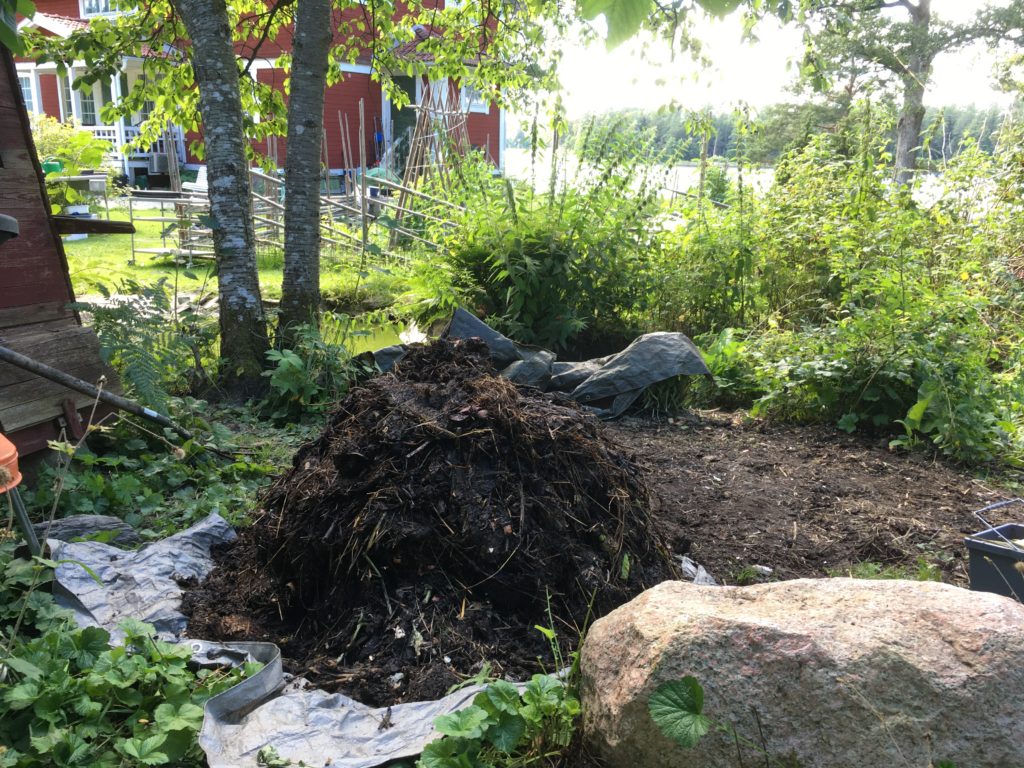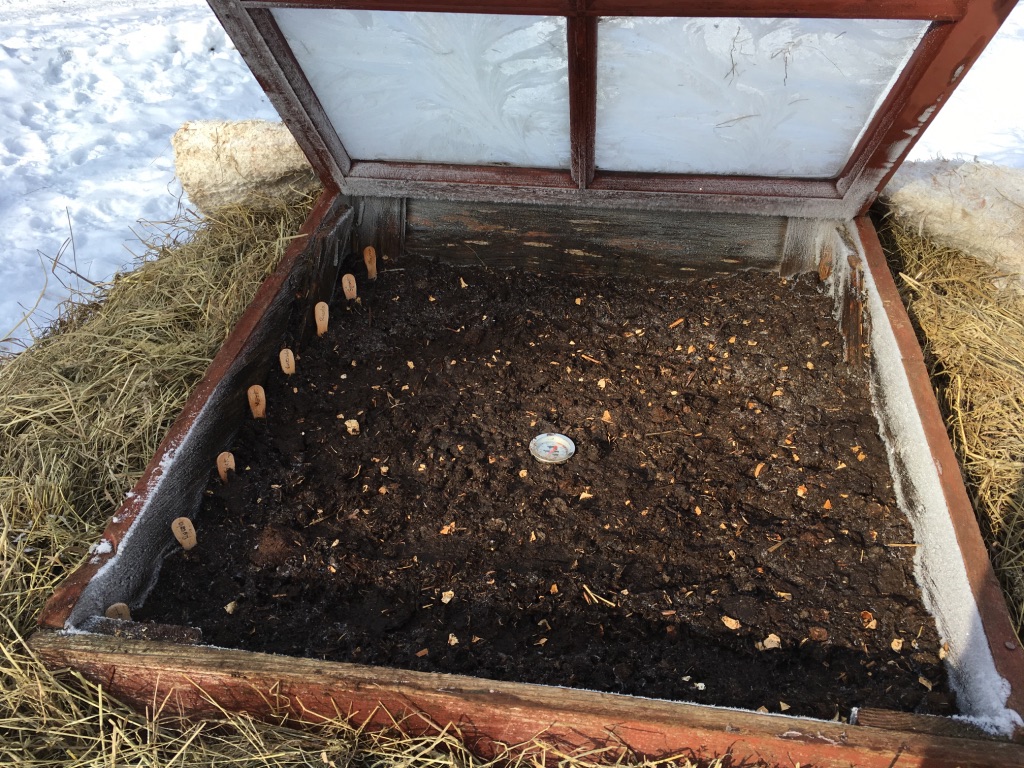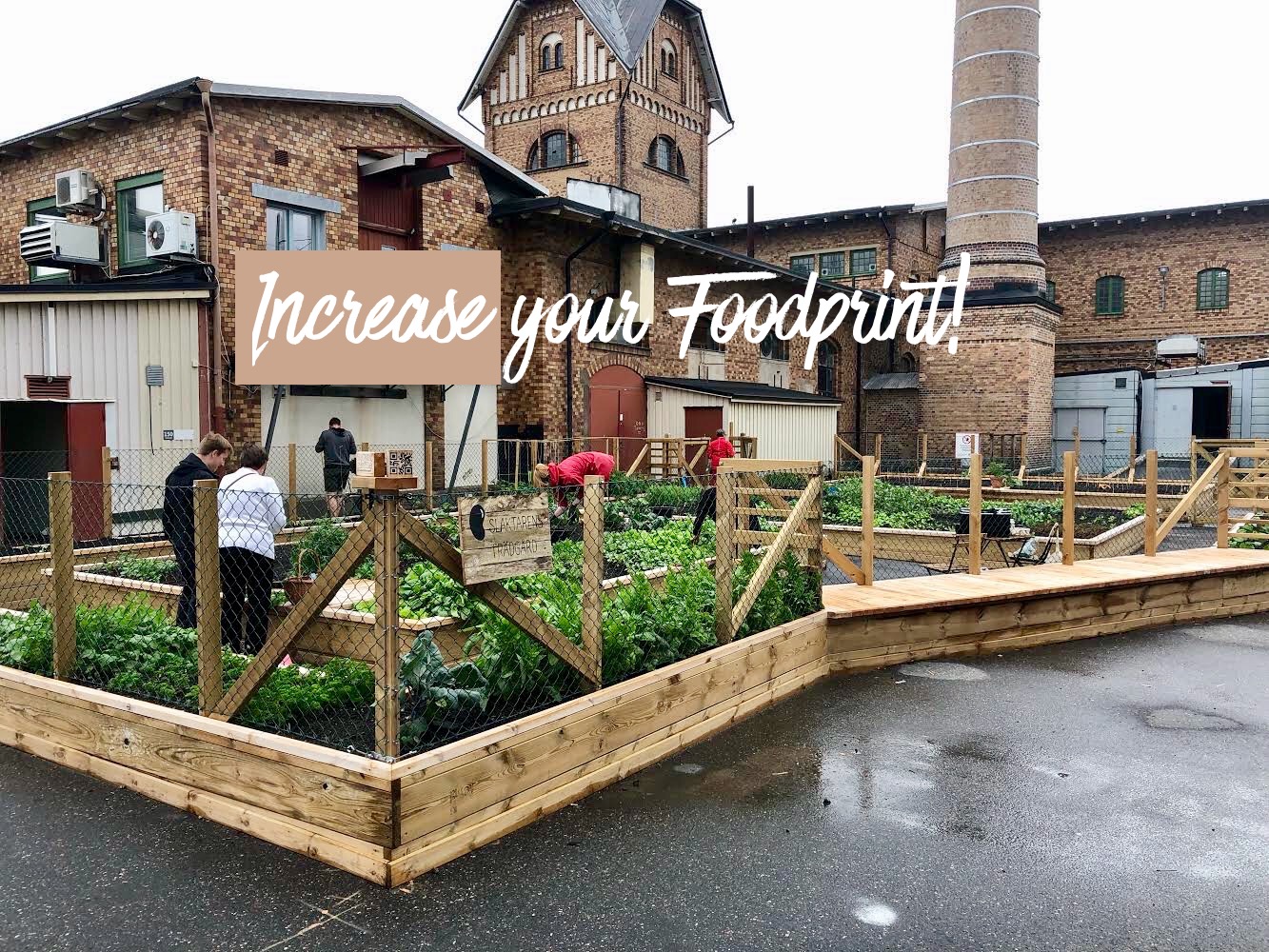
Carbon positive food regions: Part 1 – Co-creating our future
Välkomna till en spännande resa mot en regenerativ framtid! I detta blogginlägg utforskar vi möjligheten att skapa kolinlagrande matregioner, där regenerativt jordbruk kan vara svaret på en rad akuta hållbarhetsutmaningar. Vi diskuterar även hur vi genom medvetna val i vår kost kan forma landskapet och främja positiva avtryck genom maten vi äter. Lär dig hur verktygen Holistic management och Keyline Design kan vägleda oss. Tillsammans kan vi skapa en bättre värld för alla varelser som bor på planeten – båda nuvarande och framtida generationer!
CARBON POSITIVE FOOD REGIONS – and how we can co-create them
Could “Västra Götalandsregionen” (the administrative region of West Sweden) become the first to target regional net carbon sequestration in soil by supporting regenerative agriculture? Or Maybe Orust Municipality, where I do a case study in my thesis?
Regenerative agriculture could be a solution to many, if not most, of our current urgent sustainability challenges. It could regenerative our soils and ecosystems while also producing healthy food, improve biodiversity, water infiltration rates, bringing people together and creating new jobs. What if we could facilitate regenerative land use on a regional scale and thus regenerating ecosystems, communities and local economies in the region – improving quality of life for all beings? Human, non-human, present and future generations.
POSITIVE FOODPRINTS:
We design and plan our cities and regional infrastructure like roads, housing areas, water pipes etc – may we through a collaborative food system design approach also design and plan our landscapes to facilitate regenerative land use and food production? What role does physical planners have and how can we encourage bottom up initiatives led by farmers, land owners and consumers? These are some questions I explore in my Master thesis at Chalmers School of Architecture. The challenge is not not create more damage than good with tools of top down planning by finding a good balance of bottom up and top down initiatives.
The daily choices of what people eat, could itself be seen as an act of “food system design” – impacting our common landscapes for the better or for worse. By voting with our forks on regenerative land use we can create “Positive Foodprints”!
What if we could design landscapes by the very act of eating? This is what I call “Positive Foodprints”! Designing our food system can be done by making more conscious acts of eating and having a closer relation to the land and the farmer who manages it – step by step shifting the outcome of that management to land regeneration! In fact the whole design process is based on a collaborative “food system design” carried out by the daily actions of what people eat and how it shapes the landscapes around them.
DESIGNING FOOD SYSTEMS
Om min masteravhandling: Koldioxidpositiva matregioner
About my Master Thesis: Carbon positive food regions “Carbon positive food regions”, as my thesis is called, is an attempt to create a framework, method and give an example of a regenerative regional strategy – exploring opportunities of planning for regenerative agriculture with net negative emissions on regional scale – land use that also produces local food, regenerates land, ecosystems, local communities & local economies. The project is inspired by the movement of regenerative agriculture and the many stories of such farmers. In Sweden. The design research will be situated in the context of a 450 hectare farm called Bjällansås in Uddevalla – exploring its potential as a model of regenerative land use that can be scaled up regionally to build topsoil and heal ecosystems.
Follow my process
Through a series of video-blogs I will share my insights and thoughts throughout the project. The first video I recorded in Swedish is published below:
Episode 1 = Mussel farming
Did you know that 1 ton of mussels can filter 100kg of nitrogen and 10kg of phosphorus?
The first episode in a new video series where I tell about everything from aquaculture that revitalizes ecosystems in the water to regenerative agriculture that builds up food soil and revitalizes ecosystems on land. Firstly I visit a mussel farm that can filter and absorb excess nutrient in the ocean and actively reverse negative trends of eutrophication – regenerating the water ecosystems as they grow and are harvested. The video series is also an exploration of whether we can create a regenerative carbon-sequestering food system in a region or municipality, which I investigate in my master thesis in Architecture and Planning at Chalmers Technical University.
Episode 2 – Regenerative agriculture at Bjällansås farm
At Bjällansås farm Jan Karlsson have been a pioneer in organic and regenerative agriculture and on mostly rented land they are grazing 500 livestock in a way that regenerates the land. The methods of Backcasting and Scenario planning will be used – exploring two future scenarios of carbon positive regions and how they are both shaping and being shaped by the smaller scale developments of local regenerative farms like Bjällansås. The results will be a design proposal showcasing such a future from the farm scale and up to the regional scale seeing, also pinpoint key projects and strategies that actors such as the region, municipality, farmers & land owners can take to get here.
Below is part 2 in this video series where I visit the regenerativa farm Bjällansås att Bokenäset in Uddevalla kommun (video in Swedish).
More will come up (including some in English) so please follow our channel: https://www.youtube.com/c/GrowHere/
What does regenerative mean?
This is worth diving more into and during my Master program – Design and Planning Beyond Sustainable development at Chalmers – I created this Regenerative Index (which is still work in progress) to summarize for me all the dimensions that we need to include as design criteria when we plan and design. Considering its impact for all beings, current and future generations. It is not simply about soil health and carbon sequestration (or planetary health), it’s about building thriving communities and regenerating our collective human health, our local economies and the health of our water and land ecosystems. This subsumes all of the Agenda 2030 SDG’s into a regenerative paradigm of what we need to strive towards, beyond sustainability – towards regeneration!
Holistic management – förvaltning även för kommande generationer
Hur definierar vi regenerativt lantbruk och regenerativa samhällen? Allan Savory har mycket bra att säga om detta.
“No agriculture can be truly regenerative unless it is an agriculture covering all of our Earth’s surface that is managed holistically” Allan Savory (2020)
Managing complex social and ecological systems is crucial to – if we are to find solutions to reverse climate change, biodiversity loss (or even the 6th mass extinction) etc, requires a new framework for management and decision making. Most of the challenges we face today are too complex to solve using our reductionist management methods. In this regard we can look towards Holistic Management as an excellent management framework for defining “the wholes” what we manage, who makes decisions and what a more “holistic context” looks like for individuals and organisations.
Navigating Complexity: Holistic Management for a flourishing future
Managing Earth’s intricate systems requires new approaches. Holistic Management offers a framework for inclusive decision-making, enhancing environmental, social, and economic well-being. As Allan Savory suggests, it’s not fossil fuels, but our inability to manage complexity that threatens humanity.
Crafting a shared vision for landscapes, communities, and generations requires a holistic context. Co-creating this context empowers change and aligns global policies with regenerative ideals.
The greatest danger to humanity is not fossil fuels, climate change, desertification and the massive environmental destruction being driven by global finance – it is our inability to manage complexity (Savory, 2020)
How would we like our landscapes, ecosystems, communities and future resource base to look not just for all humans today and in the future, but for the benefit of all living beings? I encourage the Västra Götaland Region to co-create their own version of a holistic context (as a basis for creating visions, strategies and decisions) and for all of us inhabitants to make our own and together we can ask global policy to change to align more with this future vision of regeneration rooted in a well defined and clear holistic context. If you are curious about this read more on: www.savory.global
Another inspiring way to learn about regenerative agriculture is through the film Kiss the Ground (2020).
Keyline planning: Let nature’s patterns inform our planning
Another useful design tool and process is Keyline Planning developed by P.A. Yeomans where he set out steps and methods to read the landscape and let the landform and water flows (as more permanent aspects of the landscape) be the basis for designing and planning our cities, farms and bigger landscapes for optimal placement of roads, buildings and forestry and ultimately catch and store water and manage land in a ways that builds healthy topsoil.
“The landscape imposes itself on the planner. The planner doesn’t put lines on a plan.” (P.A. Yeomans, 1979)
Embracing nature’s wisdom – to inform, not impose, our design
PA Yeomans tells us in an interview in 1979 that he produced 7-8 inches of topsoil in just 3 years through this technique – by transforming subsoil into topsoil. Yeomans was one of the first to develop a comprehensive framework for planning but to this day his practices has not been applied much by spatial planners. I hope to change that by using the method and process in my master thesis. Let’s let natures patterns inform our planning rather than impose our design master plans onto nature. Only nature will tell if our design and planning holds the test of time.
Nature guides planners. Keyline Planning harnesses landforms and water to craft resilient designs. By allowing nature’s patterns to shape our creations, we integrate longevity and sustainability. P.A. Yeomans’ methods, untapped by planners, can enrich our design legacy.
Sowing Seeds of Change: Embarking on a Regenerative Odyssey
As I journey through my Master’s thesis, I hope this snapshot of my exploration ignited inspiration. Watch this space for updates, insights, and progress. Together, we weave a future rooted in regeneration.
Read part two of the blog series here:
Carbon positive food regions & Food system design – Part 2
Warm regards,
Jonathan Naraine
Architect & Food System Designer – The Foodprint Lab
Co-founder – Grow Here
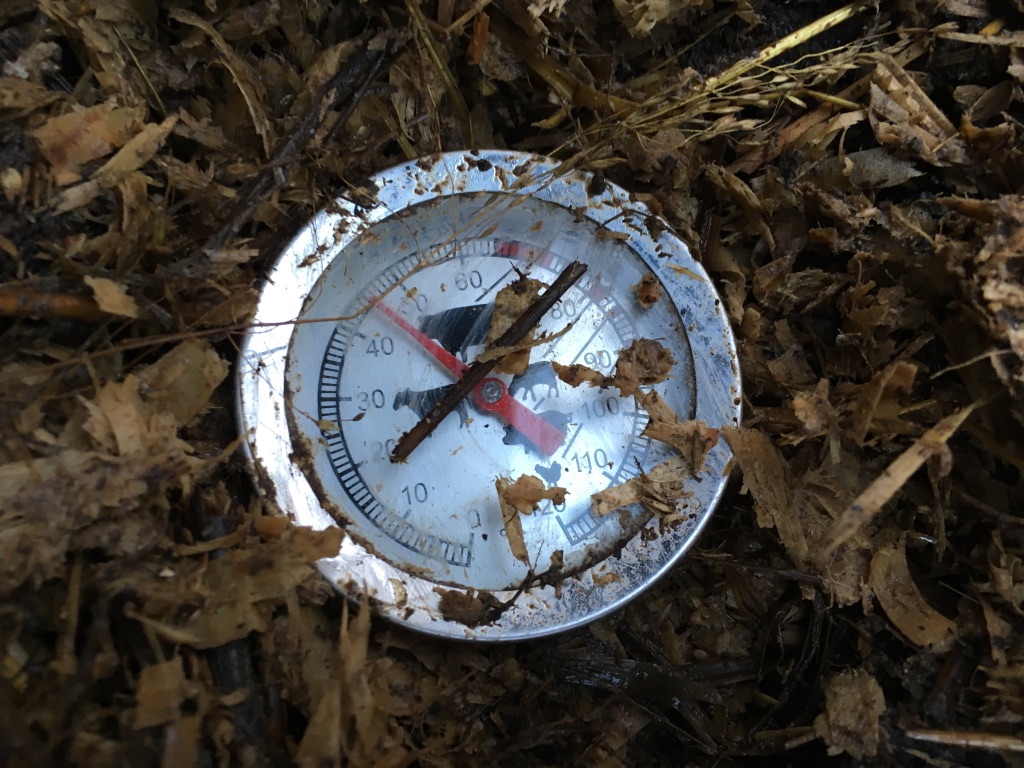
Quick hot composting – Ready made compost in 18 days (Full article)
There are many ways to create compost, but if you want it to go fast and at the same time raise the temperature enough to kill pests, diseases and weed seeds, this method is perfect. The 18-day method can also reduce the amount of organic material that oxidizes and disappears as climate-damaging carbon dioxide or methane and the pile is more or less as large when it is finished as when it is first laid. So more compost for you, and less climate impact at the same time. But it’s a little more laborious however but in this article we tell you how it works step by step.
The Berkeley method – Compost in 18 days
Think about this:
With this method, you can get ready-made compost in 2-3 weeks, but there are some important things to keep in mind for everything to work well.
- The pile must be at least 1 cubic meter in size, preferably 1-1.5 cubic meters
- The pile should be turned every other day from day 4 to day 18.
- Carbon-rich materials such as leaves, branches and other “brown” materials should be finely chopped, to decompose properly. Feel free to use a compost grinder or similar.
- Cover the compost with a tarp or something that hinders it from becoming to dry or too wet. Make sure that the right moisture is maintained, it should be around 50-60% moisture.
In the following video from Geoff Lawton, you can learn more about the different materials to use when composting:
How to create a hot compost in 18 days
Step 1:
Gather the material
- Gather all the materials you need. Strive to have a carbon-nitrogen ratio of between 25: 1 and 30: 1. See the video above for further explanation.
- The compost is ideally built from about 1/3 “green material” (ie fresh grass clippings, plants or green leaves), 1/3 manure (preferably fresh manure) and 1/3 “brown material” (leaves, dried plant parts and branches – preferably chopped)
- Lay everything in 3 piles and pull a water hose to the site to be able to water constantly when you build the compost.
Step 2:
Build the compost pile
- Build the compost by laying out a layer from each pile as when making a lasagna.
- You do not need a frame or compost grid around the compost is laid properly.
- Try to make the diameter of the compost around 1 meter and the height preferably 1-1.5 meters.
- Cover the compost with a tarpaulin and place a compost thermometer in the middle to keep track of the heat.
- You can also use an activator in the middle of the compost, e.g. comfrey, dead animals, etc.
Step 3:
Turn the compost regularly and monitor the heat
- Make sure that the compost is at least 55 degrees C. When the pile reaches a temperature of 60-65 degrees, it is time to turn it so that it does not burn / oxidize too much.
- After 4 days, the compost has usually reached temperature and it is time for the first turn. Prepare space so that the entire compost can be moved to the surface next to where it now stands and move from top to bottom with a handle or similar.
- Turn the compost “inside out”: When you turn the compost, you feel that it is warmer in the middle and colder on the sides and you can advantageously place the cool pieces in the middle of the new pile and the warm ones at the outside. Water if necessary to get the right moisture. You can test by squeezing the soil and it should only drip one drop.
- Then turn it over every other day, ie days 6, 8, 10, 12, 14 and 16.
On days 6-8, the pile usually reaches its highest temperature and then gradually decreases.
After 18-21 days, you should have a finished compost that is black and lukewarm – and filled with nutrients and micro-life.
If everything went right, it should be about the same size as when you built it.
More tips can be found in this video in English with Richard Perkins who also wrote about the method in his book Making Small Farms Work.
My compost does not get hot, what could have gone wrong?
If your compost does not get hot, you should check this:
- Was the pile large enough, ie. at least 1-1.5 cubic meters?
- Was it the right moisture content? Or is the compost too dry or too wet?
- Is your brown material finely chopped?
If all this seems ok and you have not come up in heat, it is probably due to the lack of nitrogen in the compost. So you need more nitrogen-rich material. Try mixing in manure and maybe even urine. Wait two days and see what happens.
PS: Maybe you are also eager to use the heat from the composting to extend the season? Check out our article on building a hot bench, where you can use the burning compost / manure to start the growing season several months earlier. Read the article on how to build a hot bench here.
Good luck with your hot composting!
Let us know how it goes and tag Grow Here and use the hashtag #DreamsGrowHere when you share photos of your hot compost!
Sources:
Making Small Farms Work – Richard Perkins, 2016
Geoff Lawton – 2019
Warm greetings,
Jonathan and the Grow Here team
